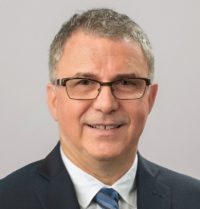June 9, 2025
Catch-Up Strategies for Business Owners’ Retirement

By Chris Palabe, CFS®, AIF®
As retirement approaches, business owners have powerful tools and strategies at their disposal to “catch up” quickly by leveraging their business structure for significant tax-advantaged contributions. The key lies in understanding and strategically utilizing various business owner retirement vehicles.
This article explores high-impact strategies designed to accelerate your savings, leverage tax advantages, and essentially help you bridge the gap to a confident and fulfilling retirement—even if time feels like it’s running short.
Understanding the Landscape: Business Owner Retirement Options
First, let’s explore fundamental business owner retirement plan options, as those options allow for far greater contributions than standard IRAs or 401(k)s available to employees.
- Solo 401(k): Ideal for self-employed individuals or businesses with no full-time employees. A solo 401(k) allows you to contribute in two capacities: as an employee and as an employer.
- SEP IRA (Simplified Employee Pension IRA): This is a simpler option for self-employed individuals or small businesses with a few employees. Contributions are made solely by the employer, allowing you to contribute up to 25% of your net self-employment earnings, up to a maximum of $70,000 for 2025. (1)
- SIMPLE IRA (Savings Incentive Match Plan for Employees): Designed for small businesses with 100 or fewer employees (including the owner). Employees can make elective deferrals, with a limit of $16,500 for 2025. (2)
Supercharging Savings: Leveraging “Catch-Up” Contributions
Now let’s take a look at a game-changer for older business owners: “catch-up” contributions.
- Standard age 50+ catch-up: If you are age 50 or older by the end of the year, you can contribute an additional amount to certain plans. For 401(k)s, this is an extra $7,500 for 2025, (3) bringing the total employee contribution to $31,000. For SIMPLE IRAs, the additional catch-up is $3,500 for 2025. (4)
- SECURE Act 2.0 “super catch-up” (ages 60-63): A significant enhancement introduced by the SECURE Act 2.0, starting in 2025, allows those aged 60 to 63 to contribute an even higher catch-up amount to their 401(k)s or SIMPLE IRAs. For 401(k)s, this limit is the greater of $10,000 or 150% of the regular catch-up limit (which would be $11,250 for 2025). (5) For SIMPLE IRAs, it’s the greater of $5,000 or 150% of the regular catch-up limit ($5,250 for 2025). (6)
- IRA catch-up: Don’t forget personal IRAs. If you’re 50 or older, you can contribute an additional $1,000 to a traditional or Roth IRA, independent of your business plan contributions.
Non-Qualified Deferred Compensation (NQDC) Plans
For well-compensated business owners or key executives who have already maxed out all qualified retirement plans, Non-Qualified Deferred Compensation (NQDC) plans offer an additional layer of tax deferral.
- Unlimited deferrals: NQDC plans are not subject to IRS contribution limits, allowing for the deferral of virtually any amount of salary, bonus, or other compensation.
- Tax deferral: Taxes on deferred income and its growth are postponed until the funds are distributed, typically in retirement.
- Consideration: Unlike qualified plans, NQDC plans are generally “unfunded” for tax purposes, meaning the deferred amounts remain part of the company’s general assets and are subject to the claims of creditors in the event of business insolvency.
Tax Planning and Diversification Strategy Essentials
Maximizing retirement plan contributions involves strategies for saving money wisely.
- Review plan features: As mentioned above, it’s important to leverage the catch-up and super catch-up options offered by the IRS. Confirm that your chosen retirement plans (especially 401(k)s and SIMPLE IRAs) are updated to allow for the enhanced SECURE Act 2.0 contributions for ages 60-63.
- Roth vs. pre-tax strategy: Carefully consider whether pre-tax (deductible) contributions or Roth (after-tax, tax-free growth) contributions make more sense for your tax situation, both now and in retirement.
- Diversification: As a business owner, a significant portion of your wealth is often tied to your company. As you save more for retirement, it’s vital to diversify your accumulated assets outside of your business to mitigate concentration risk.
- Business exit strategy: Your business itself is likely your largest asset. Develop a clear exit or succession plan, as the eventual sale or transition of your business can be a major component of your overall retirement funding.
Seek Business Owner Retirement Guidance
Diligently applying the strategies discussed above and seeking guidance from a professional financial advisor and tax professional can put you on the path to transforming your unique financial position into a powerful engine for accelerated business owner retirement savings.
As independent financial advisors, Palabe Wealth specializes in helping our clients with retirement planning, wealth management, and financial planning tailored to their unique situations. If you need help with business owner retirement and financial planning, please contact our office today.
Schedule a 20-minute introductory phone call or call us at 847-249-6600 to learn if we are the right fit for your financial goals.
The opinions voiced in this material are for general information only and are not intended to provide specific advice or recommendations for any individual.
There is no guarantee that a diversified portfolio will enhance overall returns or outperform a non-diversified portfolio. Diversification does not protect against market risk.
Traditional IRA account owners have considerations to make before performing a Roth IRA conversion. These primarily include income tax consequences on the converted amount in the year of conversion, withdrawal limitations from a Roth IRA, and income limitations for future contributions to a Roth IRA. In addition, if you are required to take a required minimum distribution (RMD) in the year you convert, you must do so before converting to a Roth IRA. (22-LPL)
Asset allocation does not ensure a profit or protect against a loss. (34-LPL)
All investing involves risk including loss of principal. No strategy assures success or protects against loss.
This material was prepared for Palabe Wealth Inc.’s use.
____________
(1) SEP IRA Contribution Limits for 2025, Kiplinger, April 15, 2025
(2) SIMPLE IRA contribution limits, IRS.gov, February 27, 2025
(3) 401(k) limit increases to $23,500 for 2025, IRA limit remains $7,000, IRS.gov, November 1, 2024
(4) SIMPLE IRA Contribution Limits for 2025, Kiplinger, April 15, 2025
(5) New SECURE 2.0 Super 401(k) Catch-Up Contribution for Ages 60-63, Kiplinger, May 7, 2025
(6) SIMPLE IRA Contribution Limits for 2025, Kiplinger, April 15, 2025

Chris Palabe, CFS, AIF®
Chris Palabe is the CEO and a Financial Advisor at Palabe Wealth, a firm that provides exceptional expertise in the Financial Planning space. For over 25 years, he has cultivated a deep understanding of the complexities of wealth management and retirement planning, making him a valued advisor to both Plan Sponsors of 401(k) plans and Individual Investors.
Holding esteemed designations such as Certified Fund Specialist (CFS) and Accredited Investment Fiduciary (AIF), Chris showcases his commitment to upholding the highest standards of investment advice and fiduciary responsibility in his advisory relationships. These designations are a testament to his knowledge and dedication to providing clients with sophisticated and ethical financial guidance.
He holds his Series 6, 7, 63, and 65 licenses through LPL Financial, which qualify him to offer a broad range of financial products and services.
Chris’s distinguished career is characterized by his unwavering commitment to his clients' financial well-being. He focuses on crafting tailored strategies that aim to optimize retirement outcomes and financial independence. He continually strives to help the individuals he works with on their path towards financial success.
Over the years Chris has refined a consistent, strategic investment philosophy supported by a significant body of academic research. He believes that a widely diversified portfolio of investments tailored to each client’s unique risk tolerance and financial goals is the key to their financial success.
Beyond his professional achievements, Chris has a profound passion for dressage, a highly skilled form of horse riding performed in exhibition and competition. This discipline requires a remarkable level of dedication, precision, and harmony between rider and horse, qualities that mirror his approach to financial planning.






